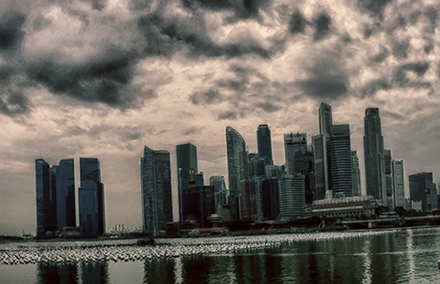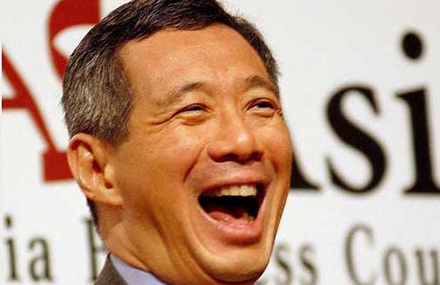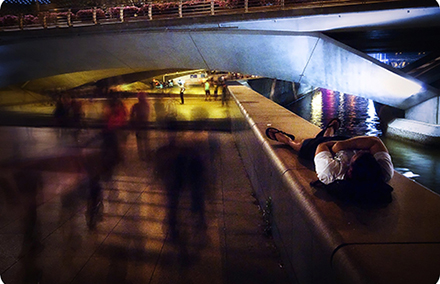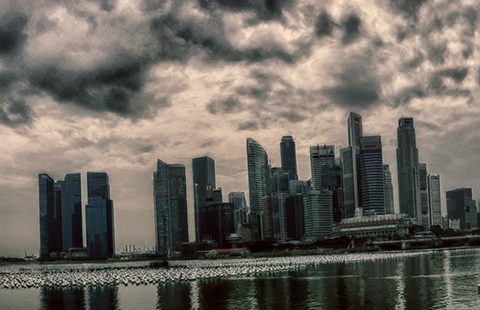
Photo by Roman Emin on flickr https://www.flickr.com/photos/roman_emin/
Bridget Welsh on how the past, present and future are haunting the 2015 election campaign.
It is political season in Singapore, with the hustings now passing the halfway point in a competitive election.
The campaign – a short nine days – is the extension of ongoing politicking since the 2011 elections in which the ruling People’s Action Party (PAP) won the most seats, but was perceived to have lost ground politically with the loss of a GRC (Group Representative Constituency) and post-election defensive posture.
Polling day is 11 September, one day before the end of the Hungry Ghost month when the spirits are out and about. In fact, ghosts are haunting this campaign.
Ghost of the past
The PAP comes into this campaign with an advantage. This is not the usual advantage of dominating all the mainstream media, controlling state resources for their campaign and putting in place an electoral system and constituencies that are crafted to favour their position.
The advantage this time round is that they are relying on the sentiment over the passing of Lee Kuan Yew and tapping into the nationalism that has surrounded Singapore’s 50th anniversary (SG50). The pumping of nationalism is not a new tactic for the region, as it was used in Indonesia’s 2014 election with similar overtones of recalling earlier strongmen.
But what distinguishes the PAP’s harnessing of the ghost of the past is the breadth and systematic nature this underscores the party’s campaign messaging.
Unlike the 2011 election, the PAP has worked to control and dominate the electoral narrative, re-emphasising the ‘Singapore Story’ captured in Lee Kuan Yew’s autobiography. Themes of ‘success’, ‘vulnerability’ and PAP’s rightfulness as the ‘best and brightest’ to rule resonate in speeches and posters. The PAP is arguing that their governance of Singapore – often explicitly compared to the instability of neighbours – entitles the party to five more years of political dominance.
Lee Kuan Yew’s presence in the campaign goes beyond the framing of history and sentiment; his style of electioneering has also come back to the fore as well. Attacks and negative campaigning have been an integral part of the campaign. The PAP has focused its guns on main opponents, the Worker’s Party, management of the town councils under their jurisdiction.
While there are legitimate questions to be asked about local governance and management, these questions extend to both sides of the political divide. The attacks go beyond issues and include highly personal character assassinations on individuals such as Chee Soon Juan. The practice of attacking negative campaigning was honed during the LKY era.
What is perhaps surprising is the degree to which Prime Minister Lee Hsien Loong is engaging in this practice himself. Premier Lee is no longer ‘Mr Nice Guy’, as he leads the attacks as he father did in earlier campaigns.
Ghost of the present
This election is indeed a critical contest for Lee Hsien Loong. Lacking the high popular vote of his predecessors and facing a more challenging political environment in this age of social media, Lee is struggling to come out of the shadow of his father.
The 2015 election is his election, as he needs a mandate of his own. Perhaps more than any election in recent decades, present conditions in Singapore are not as favourable as they were in the past.
Growth numbers are down. Cost of living remains exorbitantly high. Bread and butter concerns that dominated the 2011 campaign continue to strike a chord among voters. These concerns are not just about prices for goods, but are tied to security, defined broadly.
Despite measures that have increased the supply of public housing and significant interventions to assist with rising health care costs, Singaporeans worry about being able to retire (with debate over social security savings plan, the CPF, meaningful), and whether they can fulfill their dreams of home ownership and career development.
Many Singaporeans are struggling with wages that have effectively been devalued with the high cost of living.
Poverty numbers are shockingly high for a country of Singapore’s per capita income numbers. There are in fact at least two Singapores – one in which high paid salaries have numbed the sticker price of a non-hawker meal and another where the options to enjoy the glitz and the glamour of Singaporean city culture is beyond their means. The former rides the heavily crowded MRT and buses while the latter relies on taxis or their cars.
There are sharp differences in the framing of current conditions. The mainstream media has pointed to the steps taken by the PAP to address issues raised in the 2011 polls: the Pioneer Generation program, Medishied Life, tax relief, increased housing supplies, child care subsidies and more. These themes have also been mentioned by PAP candidates in the hustings.

Will Lee Hsien Loong be laughing after Friday’s vote?
This framing emphasises interventions and PAP responsiveness. Yet, others see intransigent views by the PAP on the population policy and lukewarm efforts to address systemic problems with service delivery and perceived unequal opportunities. Some even go as far to argue that there are no substantive changes.
The opposition focuses on the shortcomings in the PAP’s policy initiatives, tapping into the growing number of critical citizens in Singapore who are expecting more of their government and who are more informed than in the past. One sharp area of difference is the view that the PAP is protecting Singapore, while others argue they are giving it away to foreigners.
The PAP wrestles with painting a favorable positive picture of the present among large shares of its citizens. Many in the PAP elite do not connect to the struggles of everyday Singaporeans – as comments over cardboard boxes illustrate.
The comprehension gap is accentuated by the fact that most of the PAP candidates are part of the system or have benefitted from it in schooling, employment or clientele. The elitism of the PAP has distanced the connectivity to the ground.
This dynamic of public disconnection has its roots in what PAP touts as its strength – the selection of the ‘best and brightest,’ many of whom come from wealthier backgrounds than in the past and are part of a mold of PAP-think. The divide is not just with the population at large, but extends even within the PAP itself, with distance from the grassroots of the party – as evident from recent revelations from the PAP ground.
When one looks at the PAP candidates from the grassroots of the party it is noteworthy that the largest share of grassroots candidates appears to have been placed in the Aljunied GRC as part of what has been labeled as the ‘suicide squad’.
Ghost of the future
Perhaps the most important spirit of all in this campaign involves the future.
In the National Rally Day speech Lee Hsien Loong called on Singaporeans to back his party, to trust in what they know rather than the alternative. This call is not new, but the audience in many ways is indeed different than the past.
Many Singaporeans were expecting more detail on the economic policy platform for the country, specifically alternatives that do not rely on bringing in foreign labor as the engine of growth. Others wanted more specifics on Medishield Life or access to CPF.
The speech was heavy on generalities. Managing the region’s unfavorable conditions will require reforms in the Singapore economy, a task that will involve individuals willing to engage in needed structural changes. Will the vested interests prevail, or will there be different voices and inputs in the reform process?
How will public engagement evolve?
The PAP has a much more educated and demanding citizenry to engage than in the past. Many no longer believe in being subjects, and would rather be participants in setting the path for their future, especially the young.

Photo by digitalpimp. on flickr https://www.flickr.com/photos/nathanhayag/albums
Assessments are being made about whether the PAP is indeed listening, or conforming to views to fit their own interpretive frameworks. Traction on the need for alternative views in parliament is at the heart of the opposition campaign.
Who will be the focal point in the future trajectory? A key question ahead has surrounded who will be the future premier, post-Lee Hsien Loong. The list of potential new premiers is a long-one, with speculation rife. Many of the young contenders appear hungry for power.
Unlike in the past where there was a clear and orderly prepared transition of power with the Lee family at the core, there is not a clear path ahead for passing the baton, a factor that even worries the PAP political base. The timeline for the leadership transition is merely one election away, if the 2020 date which has previously been mentioned is in fact followed. This election is being touted as shaping this outcome for the leadership dynamic, but without clarity and transparency in this dynamic.
The questions about the future are difficult to address given the unknowns, and perhaps the hardest for the PAP to answer. Voters will decide on which of the spirits most shape their voting at the polls. In many ways, placing the campaign around SG50 has broadened the campaign beyond just a matter of parties and candidates – and most definitely beyond the management of local government.
In this meaningful national contest, Singaporeans will show exactly what they are hungry for.
Bridget Welsh is a Senior Research Associate of the Center for East Asia Democratic Studies of the National Taiwan University where she conducts research on democracy and politics in Southeast Asia. She is also an Associate Fellow at The Habibie Center and University Fellow at Charles Darwin University.
 Facebook
Facebook  Twitter
Twitter  Soundcloud
Soundcloud  Youtube
Youtube  Rss
Rss 